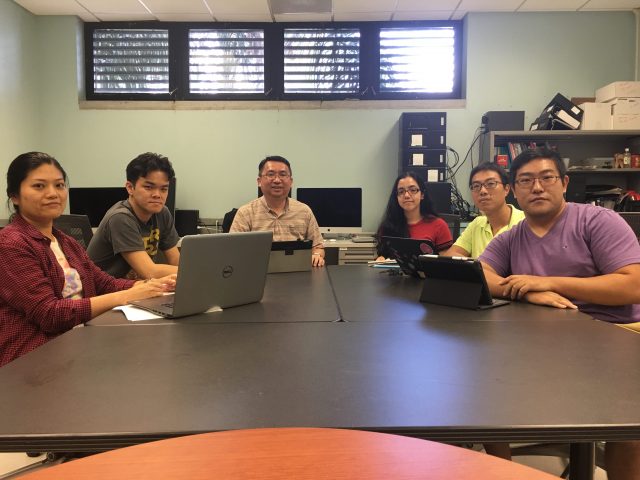Understanding Distributed Computing

Distributed computing has become a cornerstone of modern technology, enabling systems to achieve levels of performance, scalability, and reliability that were previously unattainable. As businesses, researchers, and developers continue to push the boundaries of what is possible with computing, understanding the fundamentals of distributed computing is essential. This blog post will delve into the key concepts, advantages, challenges, and real-world applications of distributed computing.
What is Distributed Computing?
Distributed computing refers to a model in which multiple independent computers (or nodes) work together to solve a complex problem or perform a large-scale task. These computers are connected via a network and coordinate their actions by passing messages to one another. The main idea is to divide a task into smaller subtasks, distribute these subtasks across multiple computers, and then combine the results to achieve the final output.
In a distributed computing system, no single computer is responsible for the entire task. Instead, each node in the system works on a portion of the task simultaneously, which can significantly reduce the time required to complete the task compared to using a single computer. This parallel processing is one of the key advantages of distributed computing.
Key Concepts in Distributed Computing
To understand distributed computing, it’s important to grasp several core concepts:
- Nodes: These are the individual computers or devices in a distributed system. Each node operates independently but works in concert with other nodes to achieve a common goal.
- Clusters: A cluster is a group of nodes that work together in a distributed system. Clusters can range from a few nodes to thousands, depending on the scale of the task and the capabilities of the network.
- Scalability: One of the primary benefits of distributed computing is its scalability. As the workload increases, more nodes can be added to the system to handle the additional processing requirements. This ability to scale out by adding more nodes is a key advantage of distributed systems over traditional, single-computer systems.
- Fault Tolerance: In a distributed system, the failure of one or more nodes doesn’t necessarily mean the entire system will fail. Distributed computing systems are designed with fault tolerance in mind, ensuring that the system can continue to operate even if some nodes go offline. This is achieved through redundancy and replication of data across multiple nodes.
- Load Balancing: Load balancing is the process of distributing workloads evenly across the nodes in a distributed system. Effective load balancing ensures that no single node is overwhelmed with too much work while others remain idle.
- Latency: Latency refers to the delay between the time a request is made and the time a response is received. In distributed systems, latency can be influenced by factors such as network speed, the distance between nodes, and the processing power of each node.
- Consistency: Ensuring that all nodes in a distributed system have the same data and that updates are propagated correctly is crucial for maintaining consistency. Different models of consistency exist, such as eventual consistency and strong consistency, each with its own trade-offs.
Advantages of Distributed Computing
Distributed computing offers several advantages that make it an attractive option for handling large-scale tasks:
- Increased Performance: By distributing tasks across multiple nodes, distributed computing systems can perform complex computations much faster than a single computer. This parallel processing capability is especially beneficial for tasks that require significant computational power, such as scientific simulations, data analysis, and machine learning.
- Scalability: Distributed systems can easily scale out by adding more nodes to handle increased workloads. This flexibility allows organizations to meet growing demands without requiring a complete overhaul of their infrastructure.
- Fault Tolerance and Reliability: The decentralized nature of distributed systems provides a higher level of fault tolerance and reliability. If one node fails, others can take over its tasks, ensuring the system remains operational.
- Resource Sharing: Distributed computing enables organizations to share resources, such as storage and processing power, across multiple nodes. This can lead to more efficient use of available resources and reduce the need for expensive hardware.
- Cost Efficiency: By leveraging multiple inexpensive computers rather than a single, powerful machine, distributed computing can be more cost-effective. Organizations can use off-the-shelf hardware and scale their systems incrementally as needed.
Challenges in Distributed Computing
While distributed computing offers many benefits, it also presents several challenges that must be addressed:
- Complexity: Designing and managing a distributed computing system is inherently more complex than working with a single computer. Developers must consider factors such as data synchronization, communication between nodes, and fault tolerance.
- Network Issues: Distributed systems rely heavily on network connectivity. Network latency, bandwidth limitations, and the potential for network failures can impact the performance and reliability of the system.
- Data Consistency: Maintaining data consistency across multiple nodes is a significant challenge in distributed systems. Different nodes may have different versions of data, leading to potential conflicts and errors.
- Security: Distributed systems are more vulnerable to security threats due to their decentralized nature. Ensuring the security of data and communication between nodes is crucial to prevent unauthorized access and data breaches.
- Debugging and Testing: Identifying and resolving issues in a distributed system can be difficult due to its complexity and the potential for failures in multiple nodes. Debugging and testing distributed systems require specialized tools and approaches.

Real-World Applications of Distributed Computing
Distributed computing is used in a wide range of industries and applications. Some notable examples include:
- Cloud Computing: Cloud services such as Amazon Web Services (AWS), Microsoft Azure, and Google Cloud rely on distributed computing to provide scalable and reliable services to users. These platforms use clusters of servers to handle everything from data storage to complex computations.
- Big Data Analytics: Processing and analyzing massive datasets require significant computational power. Distributed computing frameworks like Apache Hadoop and Apache Spark allow organizations to process big data efficiently by distributing the workload across multiple nodes.
- Scientific Research: Distributed computing is widely used in scientific research to perform simulations, model complex systems, and analyze large datasets. Projects like the Large Hadron Collider (LHC) and the Search for Extraterrestrial Intelligence (SETI) use distributed systems to process vast amounts of data.
- Cryptocurrency Mining: The mining of cryptocurrencies like Bitcoin relies on distributed computing. Miners use networks of computers to solve complex mathematical problems, with the first to solve the problem being rewarded with cryptocurrency.
- Content Delivery Networks (CDNs): CDNs use distributed computing to deliver content to users quickly and efficiently. By distributing copies of content across multiple servers worldwide, CDNs reduce latency and improve the user experience.
Conclusion
Distributed computing has revolutionized the way we approach large-scale computing tasks. By leveraging the power of multiple computers working in parallel, distributed systems offer increased performance, scalability, and reliability. However, the complexity and challenges associated with distributed computing require careful planning and management. Feel free to visit their page to find more information about distributed computing definition.
As technology continues to evolve, distributed computing will play an increasingly important role in fields such as cloud computing, big data analytics, and scientific research. Understanding the fundamentals of distributed computing is essential for anyone looking to harness the power of this technology to solve complex problems and drive innovation.
Whether you’re a developer, researcher, or business leader, staying informed about the latest advancements in distributed computing will help you make the most of this powerful and versatile approach to computing.


 SEO for E-Commerce Platforms
SEO for E-Commerce Platforms  Air Conditioning Repairs You Should Know About
Air Conditioning Repairs You Should Know About  Sea Moss into Your Daily Meals
Sea Moss into Your Daily Meals  Data Storage for Personalized Medicine
Data Storage for Personalized Medicine  Tips for Maintaining Your Plumbing System
Tips for Maintaining Your Plumbing System  CBD in Managing Arthritis Symptoms
CBD in Managing Arthritis Symptoms